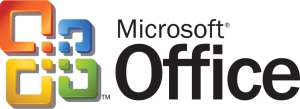From The Blog
-
ConnectWise Slash and Grab Flaw Once Again Shows the Value of Input Validation We talk to Huntress About its Impact
Written by Sean KalinichAlthough the news of the infamous ConnectWise flaw which allowed for the creation of admin accounts is a bit cold, it still is one that…Written on Tuesday, 19 March 2024 12:44 in Security Talk Read 593 times Read more...
-
Social Manipulation as a Service – When the Bots on Twitter get their Check marks
Written by Sean KalinichWhen I started DecryptedTech it was to counter all the crap marketing I saw from component makers. I wanted to prove people with a clean…Written on Monday, 04 March 2024 16:17 in Editorials Read 1496 times Read more...
-
To Release or not to Release a PoC or OST That is the Question
Written by Sean KalinichThere is (and always has been) a debate about the ethics and impact of the release of Proof-of-Concept Exploit for an identified vulnerability and Open-Source…Written on Monday, 26 February 2024 13:05 in Security Talk Read 1050 times Read more...
-
There was an Important Lesson Learned in the LockBit Takedown and it was Not About Threat Groups
Written by Sean KalinichIn what could be called a fantastic move, global law enforcement agencies attacked and took down LockBit’s infrastructure. The day of the event was filled…Written on Thursday, 22 February 2024 12:20 in Security Talk Read 900 times Read more...
-
NetSPI’s Offensive Security Offering Leverages Subject Matter Experts to Enhance Pen Testing
Written by Sean KalinichBlack Hat 2023 Las Vegas. The term offensive security has always been an interesting one for me. On the surface is brings to mind reaching…Written on Tuesday, 12 September 2023 17:05 in Security Talk Read 2074 times Read more...
-
Black Kite Looks to Offer a Better View of Risk in a Rapidly Changing Threat Landscape
Written by Sean KalinichBlack Hat 2023 – Las Vegas. Risk is an interesting subject and has many different meanings to many different people. For the most part Risk…Written on Tuesday, 12 September 2023 14:56 in Security Talk Read 1786 times Read more...
-
Microsoft Finally Reveals how they Believe a Consumer Signing Key was Stollen
Written by Sean KalinichIn May of 2023 a few sensitive accounts reported to Microsoft that their environments appeared to be compromised. Due to the nature of these accounts,…Written on Thursday, 07 September 2023 14:40 in Security Talk Read 2057 times Read more...
-
Mandiant Releases a Detailed Look at the Campaign Targeting Barracuda Email Security Gateways, I Take a Look at What this all Might Mean
Written by Sean KalinichThe recent attack that leveraged a 0-Day vulnerability to compromise a number of Barracuda Email Security Gateway appliances (physical and virtual, but not cloud) was…Written on Wednesday, 30 August 2023 16:09 in Security Talk Read 1960 times Read more...
-
Threat Groups Return to Targeting Developers in Recent Software Supply Chain Attacks
Written by Sean KalinichThere is a topic of conversation that really needs to be talked about in the open. It is the danger of developer systems (personal and…Written on Wednesday, 30 August 2023 13:29 in Security Talk Read 1818 times Read more...
Recent Comments
- Sean, this is a fantastic review of a beautiful game. I do agree with you… Written by Jacob 2023-05-19 14:17:50 Jedi Survivor – The Quick, Dirty, and Limited Spoilers Review
- Great post. Very interesting read but is the reality we are currently facing. Written by JP 2023-05-03 02:33:53 The Dangers of AI; I Think I Have Seen this Movie Before
- I was wondering if you have tested the microphone audio frequency for the Asus HS-1000W? Written by Maciej 2020-12-18 14:09:33 Asus HS-1000W wireless headset impresses us in the lab
- Thanks for review. I appreciate hearing from a real pro as opposed to the blogger… Written by Keith 2019-06-18 04:22:36 The Red Hydrogen One, Possibly One of the Most “misunderstood” Phones Out
- Have yet to see the real impact but in the consumer segment, ryzen series are… Written by sushant 2018-12-23 10:12:12 AMD’s 11-year journey to relevance gets an epic finish.
Most Read
- Microsoft Fail - Start Button Back in Windows 8.1 But No Start Menu Written on Thursday, 30 May 2013 15:33 in News Be the first to comment! Read 116465 times Read more...
- We take a look at the NETGEAR ProSafe WNDAP360 Dual-Band Wireless Access Point Written on Saturday, 07 April 2012 00:17 in Pro Storage and Networking Be the first to comment! Read 87367 times Read more...
- Synology DS1512+ Five-Bay NAS Performance Review Written on Tuesday, 12 June 2012 20:31 in Pro Storage and Networking Be the first to comment! Read 81914 times Read more...
- Gigabyte G1.Sniper M3 Design And Feature Review Written on Sunday, 19 August 2012 22:35 in Enthusiast Motherboards Be the first to comment! Read 80245 times Read more...
- The Asus P8Z77-M Pro Brings Exceptional Performance and Value to the Lab Written on Monday, 23 April 2012 13:02 in Consumer Motherboards Be the first to comment! Read 70867 times Read more...
Displaying items by tag: Security
Hacking Groups that Plant Fake Evidence Identified in Trukey and India, Where Else are They?
SentinelOne’s threat team has been tracking a couple of threat groups with an unusual goal. These groups are not looking to steal money or get a ransom, instead they are looking to track, monitor and incriminate specific targets. The targets that have been identified so far have been journalists and activists that oppose government practices. So far, the countries where these groups have been identified are limited to India and Trukey but if threat groups like this have been found there, it is likely they are everywhere.
Russia Shutters Four Marketplaces for Stolen Credit Cards on the Dark Web
The Dark Web (whispered in Letterkenny) is a playground for all kinds of illegal activity. One well traded item is Personal Information including Credit Card numbers. Due to the state of security in most organizations (Stuart!) there is no shortage of personally identifying information and credit cards for sale. There is a lot of money that trades hands around this as well, so it has been and will continue to be a target for law enforcement in the constant battle against the financial threat actor groups.
Strategy, Tactics, and Logistics. How They Fit into the Threat Landscape
The Threat Landscape is an interesting topic of discussion. It is a constantly changing thing and even the best predictions can often fall short of the actual threat. This is because in most cases, the attackers are a step ahead of the defenders. They have the advantage, to coin a D&D phrase, they won the initiative roll. Defenders are always waiting to see what might happen, they plan without really knowing what the attackers are going to do which means they have to be secure everywhere (not really a possibility). To help them put their resources in the right places, most security teams rely on threat intelligence feeds and an understanding of the Threat Landscape.
Activision is Not the Only Purchase Microsoft is Eying as Rumors Pop Up Around a Mandiant Buy
The news has been abuzz about the $65+ Billion-dollar purchase of Activision/Blizzard by Microsoft. It has been seen as an opening shot in a new stage in the console wars and is, even now, under review by the FTC. However, there are rumors that Mandiant and Microsoft are in talks about a potential acquisition of the Incident Response company. These rumors come on the heels of an announcement by Mandiant that they are partnering with NextGen XDR developer SentinelOne. Where to start on this one…
UEFI Bootkits and Malware are Becoming More Common as Attackers Refine their Techniques.
UEFI (Unified Extensible Firmware Interface) was designed to replace the old and outdated BIOS (Baic Input Output System). The older BIOS setup was slow and not very secure. It gave attackers several entry points for infection and persistence at that level. The older BIOS standard was also susceptible to attack and compromise (think the Chernobyl BIOS virus). Something new needed to be put in place to help speed things up and help account for more complex hardware and software. Hence the UEFI was born.
Microsoft Begins Blocking their Own App Web Installer Files
The concept of the app as opposed to the application is one of those nuanced distinctions that miss many people. When it comes to a mobile device an app is a bundle that that allows the installation of an application and its dependencies like an Android APK or Linux installer package. On Windows this has been a foreign concept as the thick application installer has been the defacto for so long. The .exe and .msi application is just how things get done. With the launch of Windows 8 and the “Microsoft Store” the app came to Windows.
Microsoft is Finally Blocking Downloaded Macros by Default in Office
Back in the late 90s’ the first macro viruses appeared on the scene. The leveraged a feature of Microsoft Office that allowed a malware developer to execute programmed instructions via the office interface. This new option opened a lot of avenues for inserting a malicious payload on to a target system. Now some 20+ years later Microsoft is finally really doing something about this hole in their Office product. The are blocking all downloaded/external macros by default.
CISA Sends “Patch Now” Notice on MS Vulnerability Patched in January
A vulnerability disclosed and patched in January is rearing its ugly head. Identified as CVE-2022-21882, this vulnerability affects Windows 10, 11 and Windows Server. On its own it is a significant threat since is allows for a privilege escalation that can turn into a complete compromise of the targeted device. Not exactly what you want to leave open. The good news is that Microsoft released a patch for it in January.
Golang Becoming a Primary Language in the Attacker’s Tool Kit
The Go Programing Language (Go or Golang) was developed back in 2007 by a few engineers who were working at Google at the time. Go was launched in 2009 as an open-source programing language and it is primarily used in Google’s own production systems. It has been described as Python meets C and has syntax similarities with C and procedural similarities with Python (dynamic-typing etc.). So, you end up with a language that has quickness, security, and structure of a compiled programing language along with the development speed and simplicity of a dynamic language.
New Bug in Container Deployment Tool, Argo, Puts Container Environments at Risk
Containers are a popular item with cloud-based infrastructure. The idea of running low-cost (from a resource standpoint) systems to handle work loads while maintaining a higher level of security is a nice one. Making this type of decision does not mean that it puts them out of the reach of attackers though. We have seen several methods used by attackers to gain access to and control of the containers that that are in use. One of the latest is due to a 0-Day flaw in the Argo Continuous Deployment tool.










